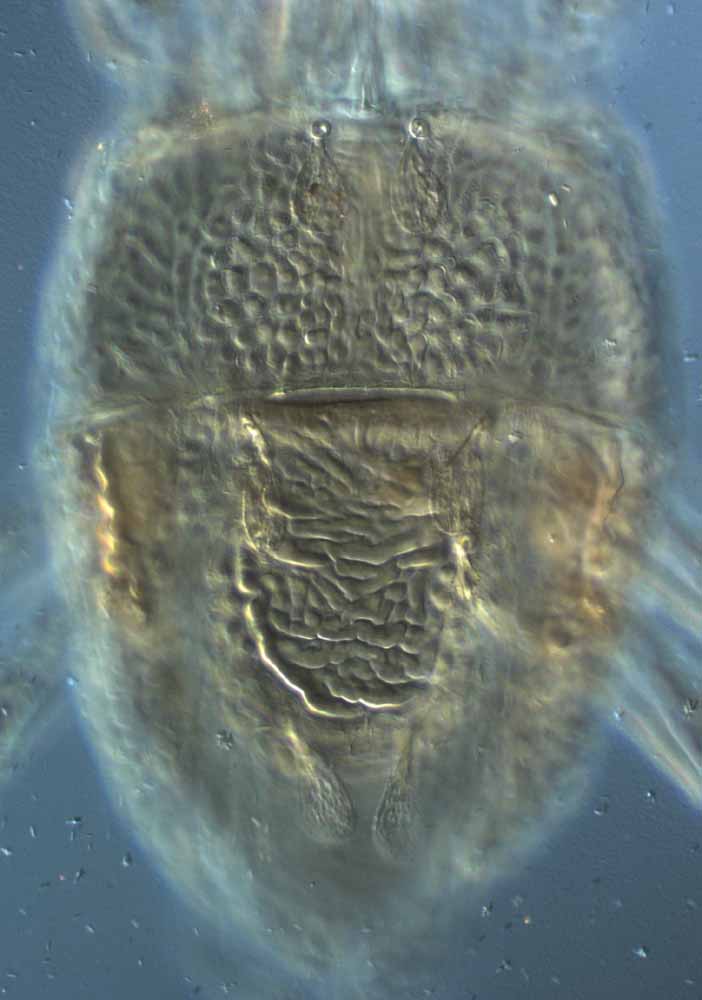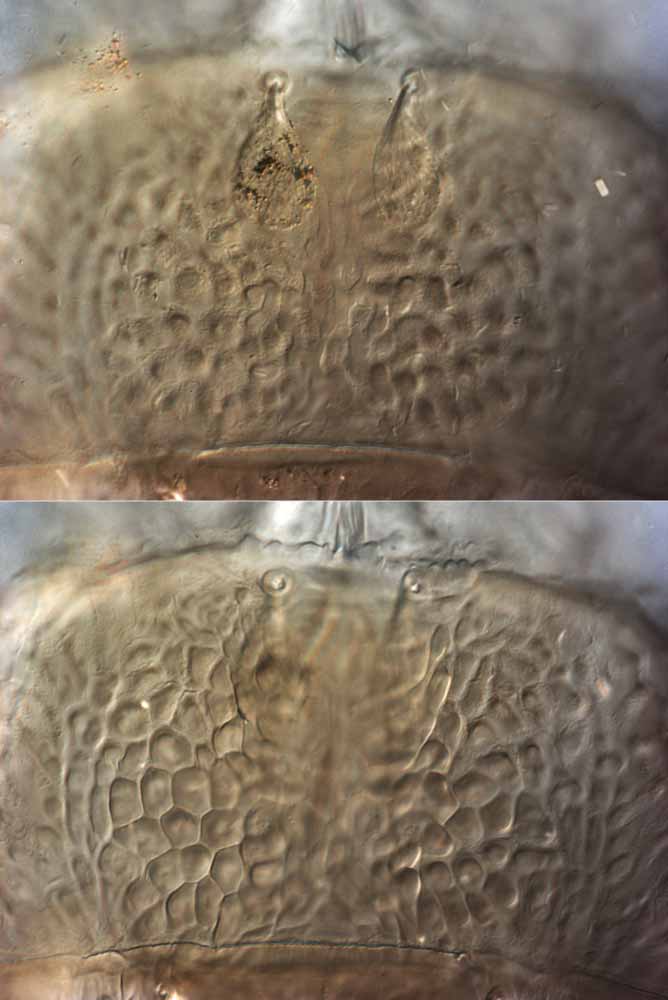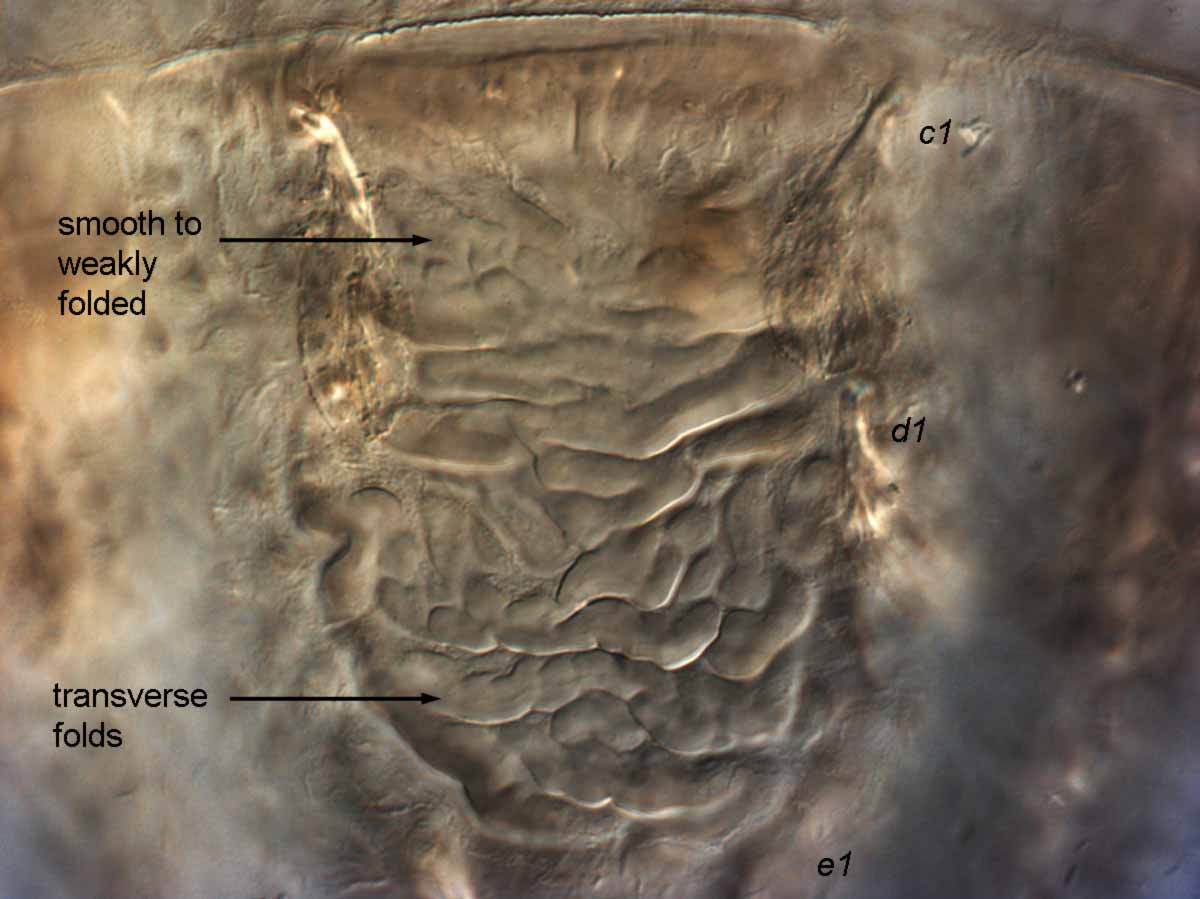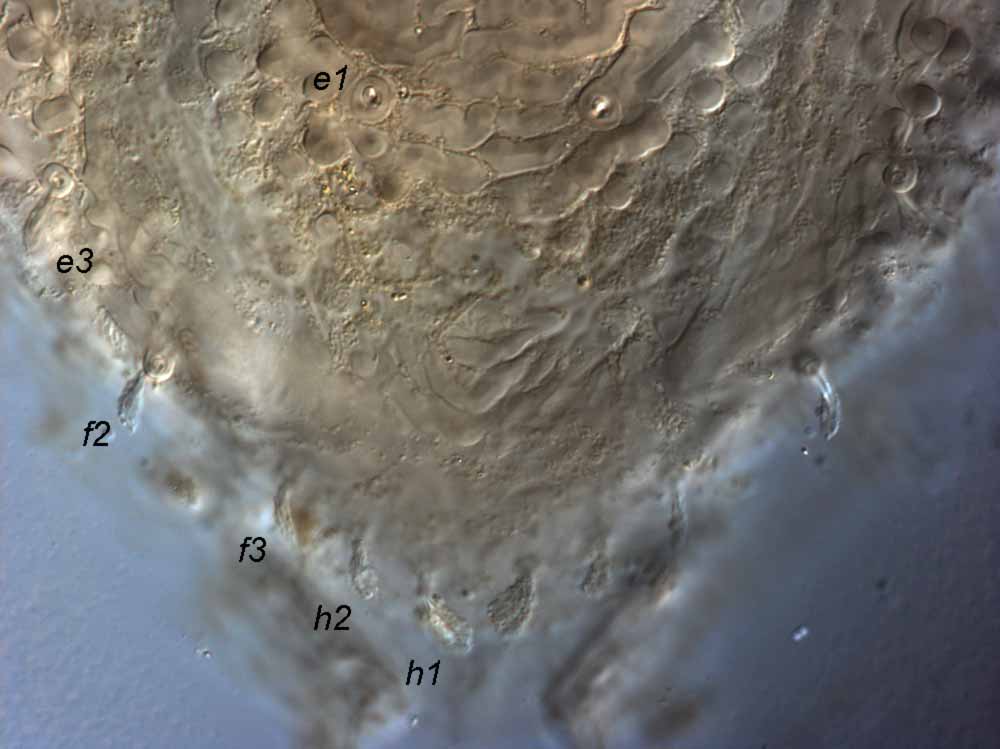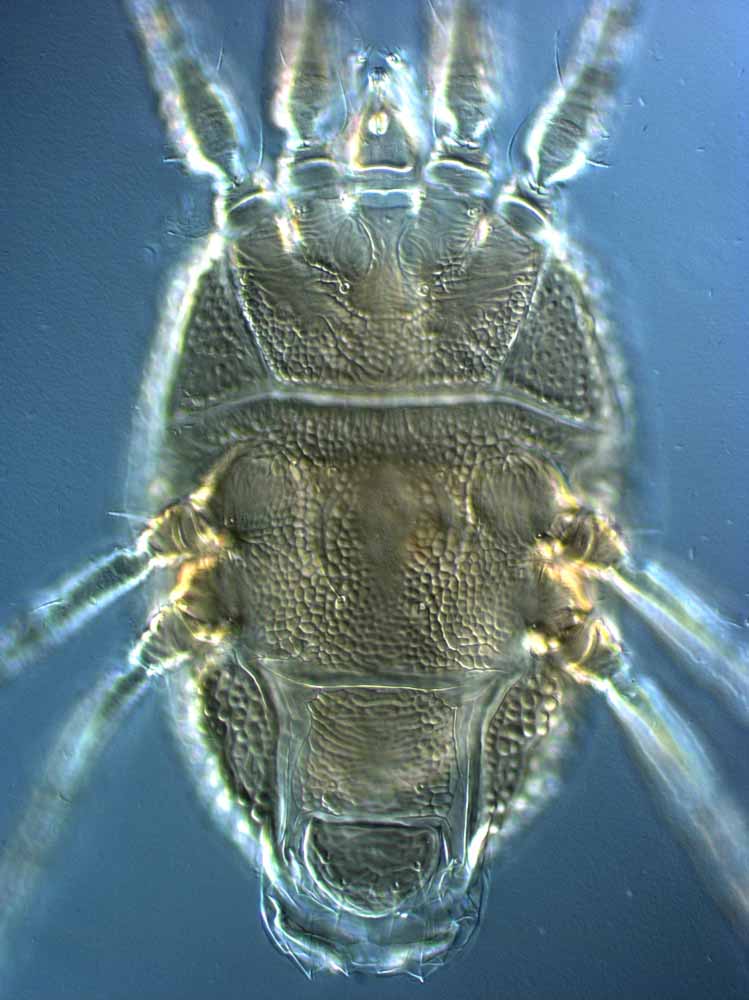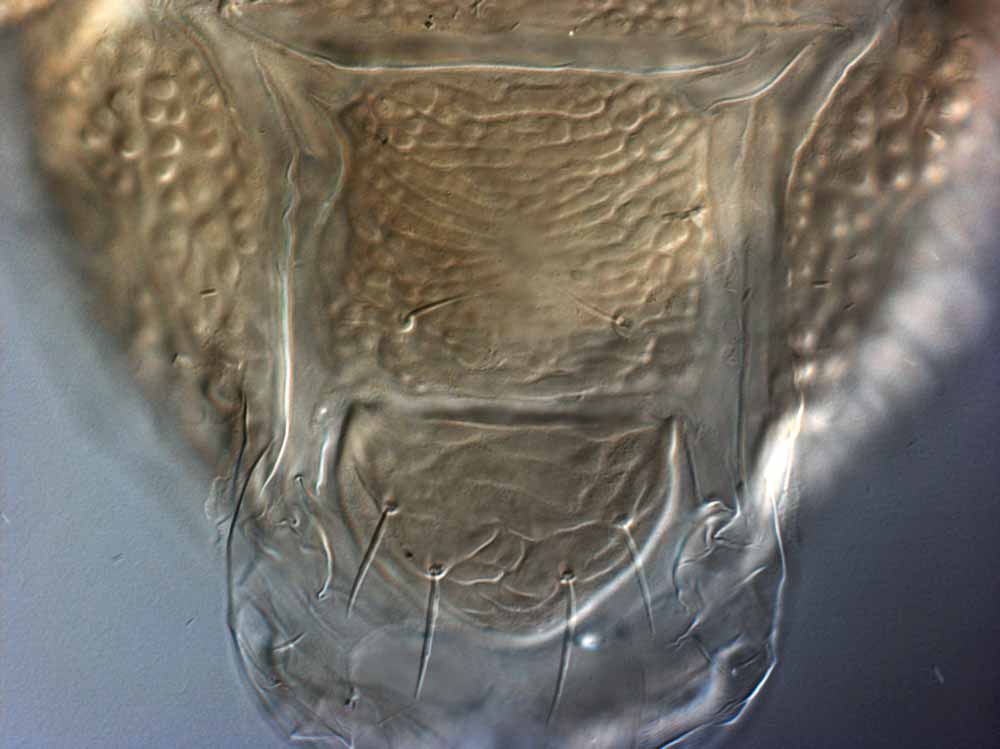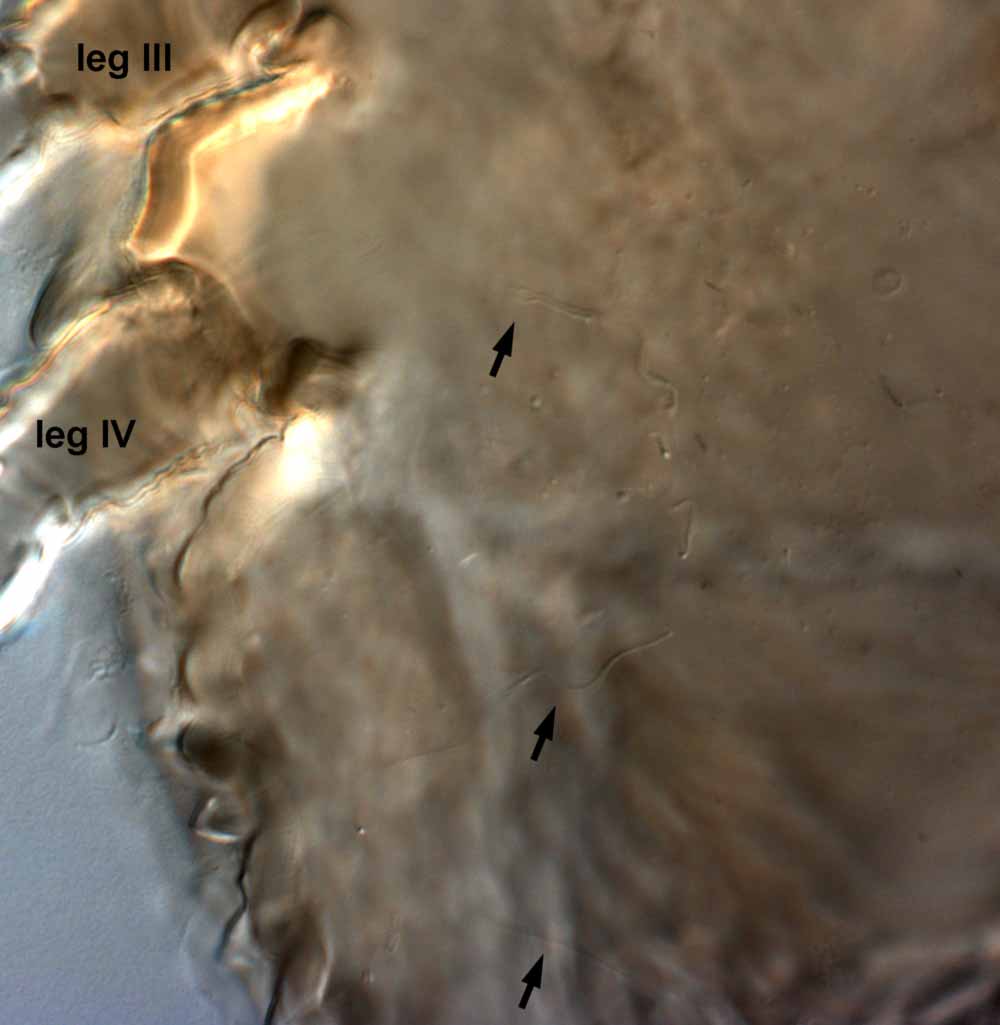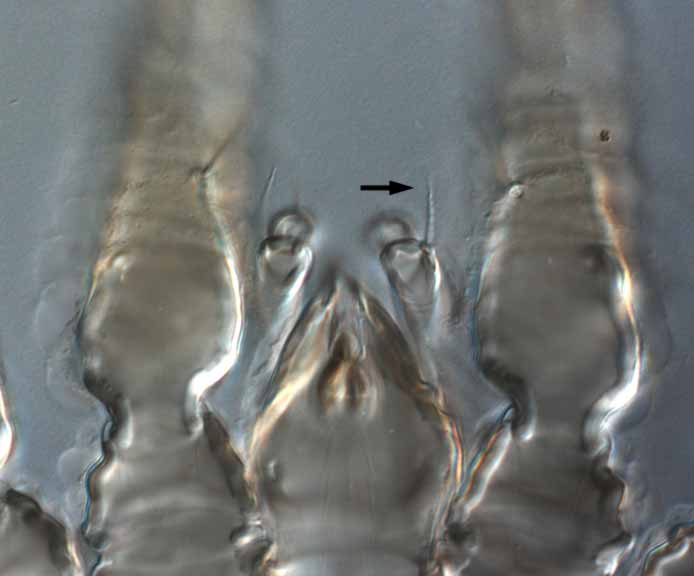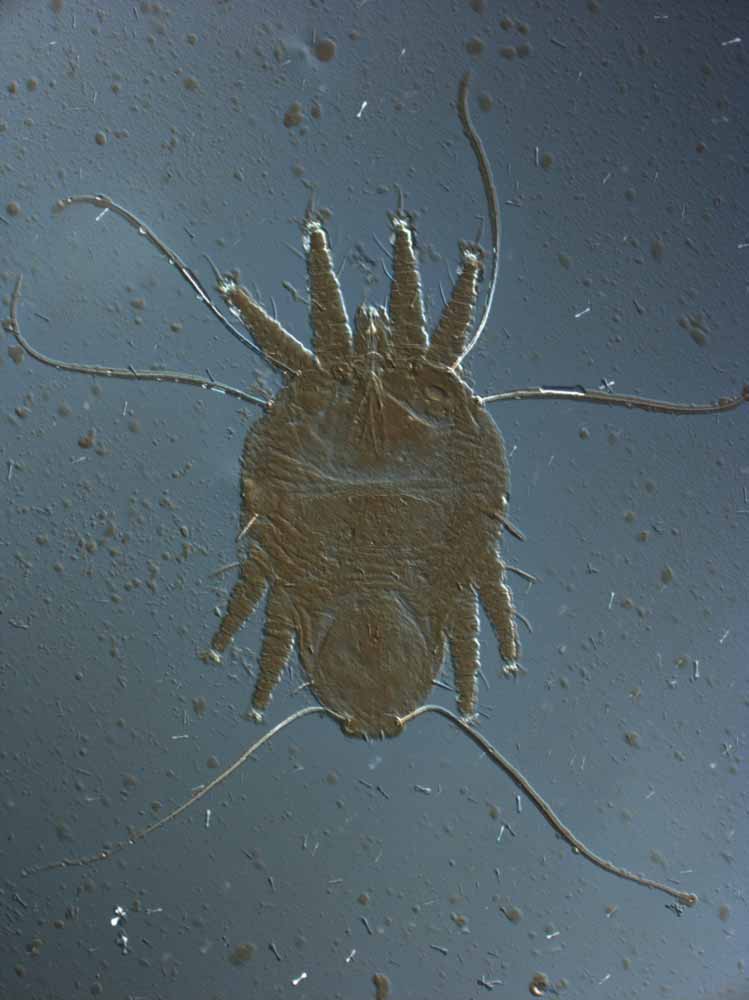Brevipalpus chamaedoreae
|
Fig. 1. Brevipalpus chamaedoreae female dorsum. |
|
Fig. 2. Brevipalpus chamaedoreae female prodorsum (two different focal points highlighting pebble-like cuticle). |
|
Fig. 3. Brevipalpus chamaedoreae female anterior dorsal opisthosoma. |
|
Fig. 4. Brevipalpus chamaedoreae female posterior dorsum. |
|
Fig. 5. Brevipalpus chamaedoreae female venter. |
|
Fig. 6. Brevipalpus chamaedoreae female posterior venter. |
|
Fig. 7. Brevipalpus chamaedoreae female spermatheca (arrows indicate duct and terminal bulb). |
|
Fig. 8. Brevipalpus chamaedoreae female palp (arrow indicates seta on palp femur). |
|
Fig. 9. Brevipalpus chamaedoreae deutonymph, indicating long sc1, sc2 setae on prodorsum. |
Authority
Baker, Tuttle and Abbatiello
Species group characters
B. cuneatus species group (sensu Baker & Tuttle 1987) = f2 present; tarsus II with 1 solenidion; dorsal central setae (c1, d1, e1) different in shape to dorsal lateral setae (c3, d3, e3); palp 4-segmented with 3 distal setae
Characters
- opisthosomal setae f2 present (= 7 setae around opisthosomal margin) (Fig. 4)
- tarsus II with 1 solenidion distally (antiaxial)
- dorsum covered in distinct pebble-like reticulation (Figs. 1, 2, 4)
- prodorsum with distinct pebble-like pattern on cuticle, large strong rounded cells (Fig. 2)
- dorsal opisthosomal cuticle between c1-c1 and d1-d1 smooth to weakly folded (Fig. 3); cuticle between d1-d1 and e1-e1 with some transverse folds (Fig. 3); cuticle around body margin with distinct pebble-like pattern (Fig. 4)
- anterior dorsal setae large, broadly spatulate (Figs. 2, 3)
- venter with distinct pebble-like cuticle (Fig. 5)
- ventral plate with medium to small rounded cells, sometimes forming transverse bands (Fig. 6)
- genital plate very large cells; genital setae long (Fig. 6)
- spermatheca with long duct, ending in simple bulb (Fig. 7)
- palp femur seta thin, tapered, weakly barbed (Fig. 8)
- palp tarsus with 3 setae
- trochanter III with 2 setae
- deutonymph with distinctive long sc1, sc2 setae on prodorsum (Fig. 9)
Distribution based on confirmed specimens
Mexico
Hosts based on confirmed specimens
Chamaedorea sp. (Arecaceae)
References
*Baker, Tuttle & Abbatiello (1975); Baker & Tuttle (1987)
* - original description

